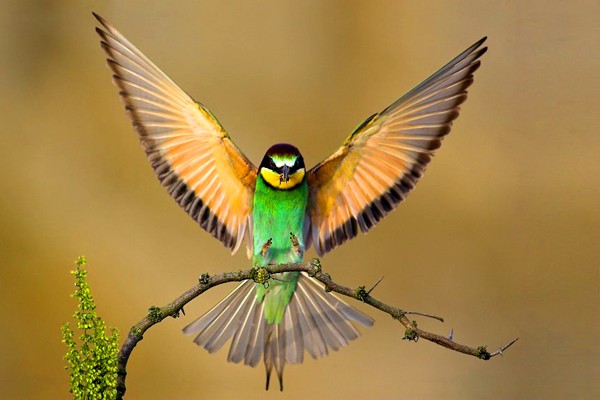|
Animals Birds and Mammals
|

http://fizzyenergy.com/beautiful-birds-looked-amazing-flight-splash-colour/
|
 http://fizzyenergy.com/beautiful-birds-looked-amazing-flight-splash-colour/ |
|
* BIRDS * What is a bird? -A bird is a warm-blooded animal that lays eggs and has feathers. What characteristics do birds have in common? -Birds have feathers and wings that cover their bodies, they lay eggs, they care for their babies inside and outside of the egg, they have beaks, and they maintain their body temperature. Comparing and Contrasting Contour and Down Feathers... -Both contour and down feathers are lightweight and made up of the same materials. Contour feathers are usually larger and have barbs that lock tightly and smoothly together. Down feathers have soft and fluffy barbs. Key Terms: Insulator: a material that does not conduct heat well and helps heat from escaping Gizzard: thick-walled muscular pouch below the crop inside the stomach Check out the links to the right to learn more about birds! *THE PHYSICS OF BIRD FLIGHT * How is a bird able to fly? -Birds are able to fly because they overcome the downward pull of gravity by means of lift. To move forward a bird must overcome the resistance of air with its wings. A bird does not fly by simply flapping it's wings up and down. The down stroke is the most important in flight - it moves upward and backward. How is lift related to air pressure? -Lift is an upward force caused by the difference in air pressure above and below a bird's wing. Comparing and contrasting flapping flight, soaring, and gliding... -Flapping flight requires a lot of wing movement and energy. Gliding and soaring require less energy. Gliding birds coast downwards while soaring birds move upward on rising warm air currents. Key Term: Lift: the upward force that causes the wings to rise Check out the link to the right to see how birds fly! * MAMMALS * What characteristics do all mammals share? -All mammals are warm blooded. Most of mammals babies are born alive. Mammals have fur or hair on their bodies. All mammals are vertebrates. All mammals use their lungs to breathe air. Mammals feed milk to their babies. What is the major function of fur and hair? -Fur and hair prevent heat from escaping, and help maintain a stable body temperature in cold weather. How are mammals teeth related to it's diet? -Mammals have sharp, pointy teeth that are adapted for biting and tearing apart food. Broad, flat teeth are used for grinding and chewing food. How do mammals take air into their bodies? -Mammals take air into their bodies through their lungs. They breathe in and out because of the action of rib muscles and the diaphragm. Key Terms: Canine: one of the four sharply pointed teeth that stab food and tear it apart Mammary Gland: where milk is made in female mammals Check out the links to the right to learn more about mammals! * THE DIVERSITY OF MAMMALS * What characteristics are used to classify mammals into 3 groups? -Mammals are classified into 3 groups based on how their young develop. The 3 groups are: Monotremes, Marsupials, and Placentalia. What is marsupial birth behavior? -The babies of marsupials crawl into their mother's pouch immediately after birth. Example: Kangaroos! What is the function of the placenta? -The placenta provides food and oxygen from the mother and passes it onto the baby. Wastes from the baby pass through the placenta back to the mother to be eliminated. Key Terms: Gestation Period: the length of time between fertilization and birth of a mammal Placenta: organ in placental mammals through which nutrients, oxygen, carbon dioxide, and wastes are passed from the mother to the baby Check out the links to the right to find out more about monotremes, marsupials, and placental mammals! |
Links: |